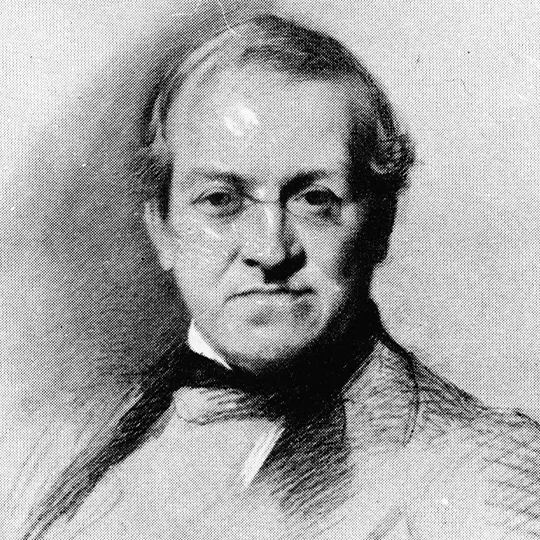
Professor Sir Charles Wheatstone
Pioneering physicist and inventor
Biography
Professor Sir Charles ‘Chas’ Wheatstone was a renowned physicist and inventor. His accomplishments include contributing to the eponymous ‘Wheatstone bridge’, the electric telegraph, and inventing and perfecting musical instruments – from the concertina to the enchanted lyre.
Sir Charles was born in Gloucester in 1802. He spent his early years in the countryside, before moving to London. A love of music seemed to run in the Wheatstone family: both Charles’ father and uncle worked as music-sellers and makers of instruments. Among his many musical inventions was the Wheatstone concertina, which reached its peak of popularity at the turn of the 20th century.
Sir Charles attended several schools in London before working as an apprentice for his uncle’s music-selling business. However, he soon discovered he wasn’t suited to the world of handicraft or business, preferring to read instead. Fortunately, his father supported these interests and Sir Charles left his apprenticeship to pursue his love of books. He could often be found browsing his favourite book stall on Pall Mall, where he spent most of his pocket money.
A talented songwriter, Sir Charles began composing when he was 15. He also enjoyed translating French poetry. During one of his book stall visits, he became intrigued by a French-language book on the discoveries of Alessandro Volta, who invented the electric battery. Sir Charles saved up all his money to pay for the book, along with a French dictionary to help him translate. He and his brother soon began repeating Volta’s experiments. The two successfully created a home-made battery from copper plates and the few pennies they had to spare. Inspired by Volta, Sir Charles would go on to make several extraordinary discoveries of his own.
In 1834, Sir Charles became Professor of Experimental Philosophy at King’s. In his first year, he embarked on an experiment to measure the velocity of electricity in a wire. He cut a wire in the middle and connected the ends to a Leyden jar, filled with electricity. This created a spark which leapt through the gap in the wire, and he was able to observe the reactions through a mirror. Sir Charles achieved acclaim for this experiment, which would go on to inspire further inventions down the line.
One such invention was the electrical telegraph, which Sir Charles co-created with Sir William Fothergill Cooke. A precursor to modern texting, the Wheatstone Cooke telegraph was a telecommunications system. It was used to transmit messages along a wire from one point to another. Later examples of this include Morse code and telegrams. Sir Charles went on to develop the Wheatstone System, which transmitted 100 words per minute. In 1845, the murderer John Tawell became the first person to be captured by telecommunication technology, bringing Sir Charles’ work into the public eye.
Other notable works include the Wheatstone bridge, an electrical circuit used to measure electrical resistance, and the Polar clock. The clock built on the work of physicist David Brewster, measuring the light of the sky through a spyglass.
Professor Sir Charles Wheatstone passed away in 1875, after a lifetime of extraordinary discoveries. His work would go on to shape scientific and musical history, and continues to inspire new generations of scientists, inventors and musicians here at King’s.
